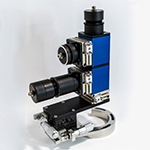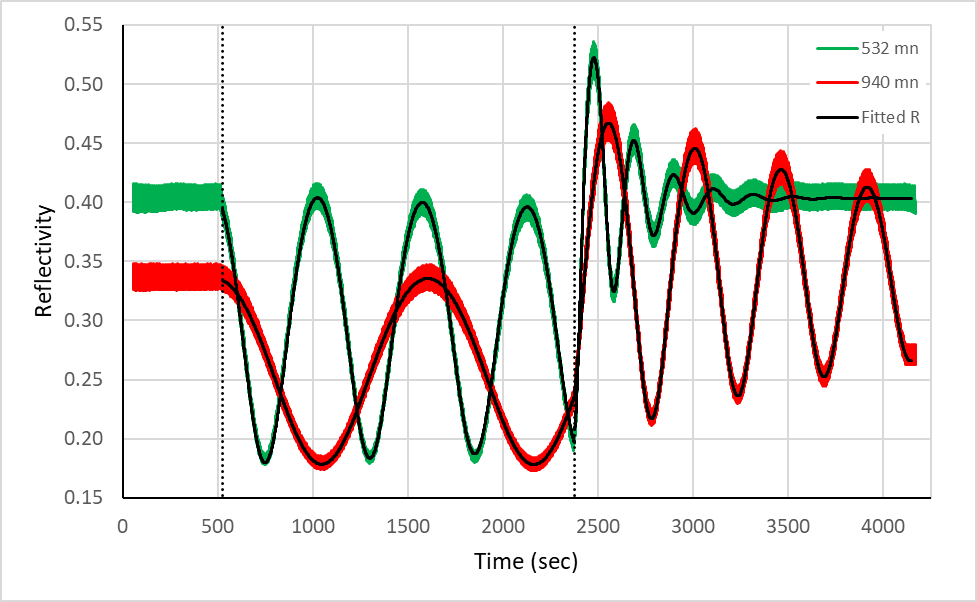 Metrology instruments manufacturer k-Space Associates, Inc. has released a new technical note on continuous reflectivity measurements for growth rate and emissivity-corrected pyrometry (ECP) in MBE systems. Real-time growth rate and wafer temperature measurement during MBE growth are important to the final product quality and yield.
Metrology instruments manufacturer k-Space Associates, Inc. has released a new technical note on continuous reflectivity measurements for growth rate and emissivity-corrected pyrometry (ECP) in MBE systems. Real-time growth rate and wafer temperature measurement during MBE growth are important to the final product quality and yield.
These measurements have been historically difficult to obtain. Taking the measurement is challenging because of variation in the reflectivity signals caused by substrate wobble. These variations are exacerbated by the relatively long substrate-to-detector distances in MBE systems (typically greater than 24”) compared to MOCVD systems (typically less than 12”). This results in oscillations in both the measured reflectivity and the temperature.
The kSA Integrated Control for Epitaxy (kSA ICE) instrument provides reflectivity and ECP measurements that can be utilized during MBE growth. This results in real-time material deposition calibration and process control in both continuous and triggered modes. The optics have been configured to overcome the wobble and path length issues in MBE.

The figure shows the simultaneous measurement of the surface reflectivity at 532 nm and 940 nm during growth of AlAs and GaAs films on a GaAs substrate. For a deposition with constant growth rate, the oscillation period is proportional to l/2n. As such, the oscillation period of the 532 nm reflectivity data is shorter than that of the 940 nm reflectivity data, as seen in the figure. A shorter oscillation period allows the fit to converge earlier in the growth. As a result, the shorter wavelength 532 nm reflectivity data allows the calculation of film thickness earlier in the growth and allows characteristically thinner layers to be measured (under 350 nm). Conversely, 940 nm reflectivity continues to produce strong oscillations beyond 350 nm.
Additional data is available in the full technical paper, “Continuous Reflectivity Measurements for Growth Rate and ECP in MBE Systems,” at https://k-space.com/products/ksa-ice/.
—
About Sandia National Laboratories
Sandia National Laboratories is a multi-mission laboratory managed and operated by National Technology and Engineering Solutions of Sandia LLC, a wholly owned subsidiary of Honeywell International Inc. for the U.S. Department of Energy’s National Nuclear Security Administration under contract DE-NA0003525. This paper describes objective technical results and analysis. Any subjective views or opinions that might be expressed in the paper do not necessarily represent the views of the U.S. Department of Energy or the United States Government.
About k-Space Associates, Inc.
k-Space Associates, Inc. (www.k-space.com) is a leading supplier of advanced metrology instrumentation for the surface science and thin-film technology communities. Founded in 1992, its products are used for monitoring temperature, film stress, film thickness/deposition rate, as well as surface morphology. Backed by a commitment to ongoing support, these solutions are currently in use for both research and manufacturing of semiconductor-based electronic, optoelectronic, and photovoltaic devices. Close collaboration with its worldwide customer base has led to the development of today’s most powerful thin-film characterization products.

